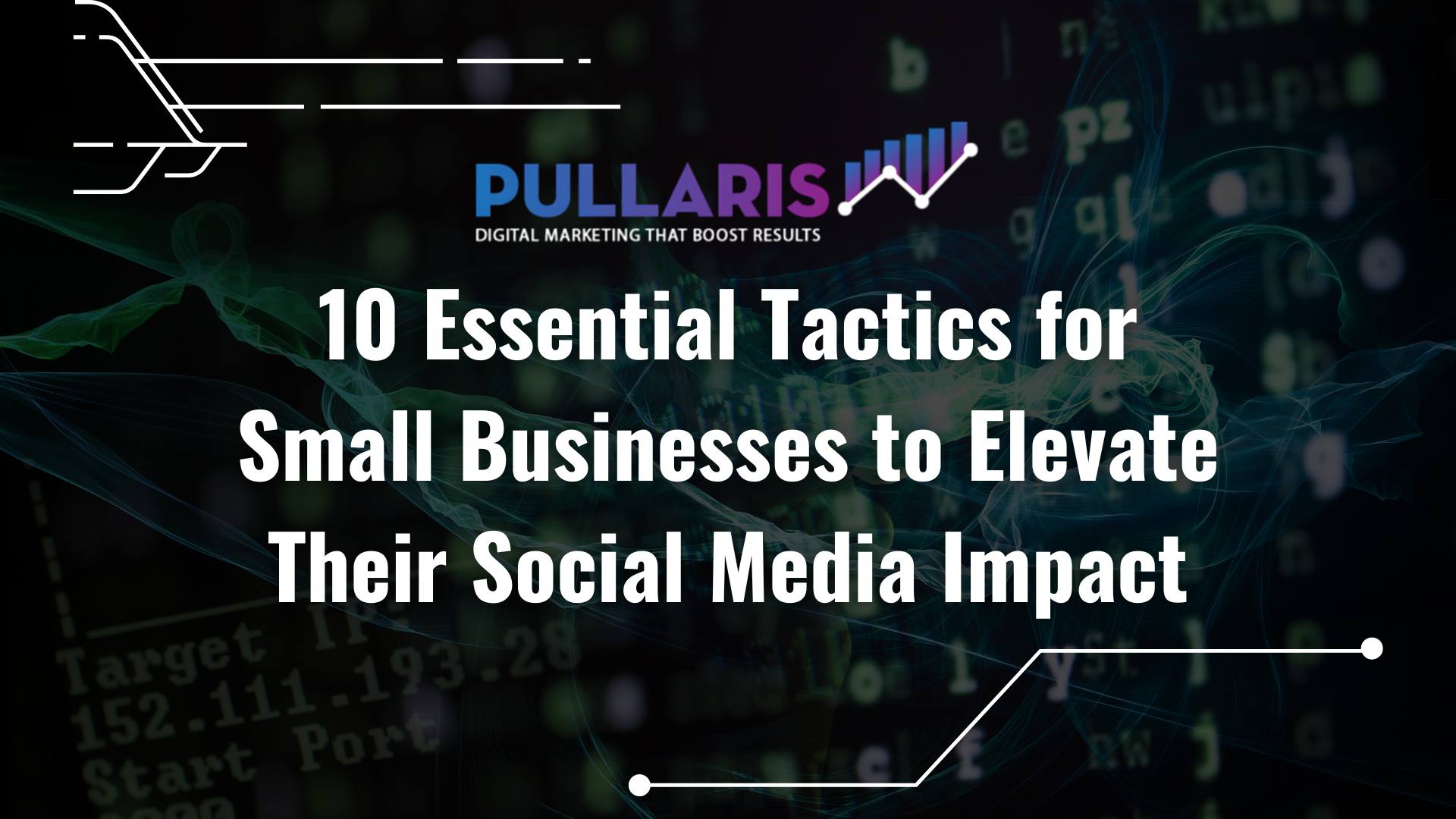10 Essential Tactics for Small Businesses to Elevate Their Social Media Impact
10 Essential Tactics for Small Businesses to Elevate Their Social Media Impact

Small businesses today cannot afford to overlook social media’s vast potential. With more than 5.3 billion people on social platforms worldwide, social media offers unprecedented access to prospects and customers alike. From building brand awareness and driving website traffic to fostering genuine relationships and boosting sales, a strategic social presence can be a game-changer.
Below is an expanded, human-centered playbook—complete with fresh insights, actionable tips, and up-to-date platform context—to help you maximize your social media efforts. All link references have been removed, and any agency mention now points to “Digital Marketing Agency.”
Why a Strong Social Media Presence Matters
Cultivating a vibrant social media profile can:
- Enhance customer service: Respond in real time to questions and issues.
- Deepen engagement: Spark conversations, polls, and user-generated content.
- Expand reach: Tap into new audiences via shares, hashtags, and platform algorithms.
- Build authority: Showcase expertise through tips, tutorials, and thought leadership.
- Drive conversions: Guide followers smoothly from post to purchase.
- Select the Right Platforms
Not every network fits every brand. Focus on where your audience already spends time:
- Facebook: Over 3 billion monthly active users worldwide, ideal for broad lead generation and community building.
- Instagram: More than 2 billion active accounts, with strong engagement on visual and short-form video content.
- TikTok: Approximately 1.6 billion monthly users, perfect for creative storytelling and viral challenges.
- LinkedIn: A professional hub of 1.15 billion members—key for B2B authority and recruitment.
- Pinterest: Over 550 million users seeking inspiration, making it powerful for product discovery.
- Snapchat: Roughly 850 million monthly users, mostly under 30, great for behind-the-scenes content.
- X (formerly Twitter): Around 611 million active users prioritizing real-time updates.
Emerging platforms like Threads, Discord, and community-focused groups can also offer niche engagement opportunities.
- Define Clear, Measurable Goals
Whether you aim to boost brand awareness, drive website traffic, or generate leads, articulate SMART goals (Specific, Measurable, Achievable, Relevant, Time-bound). For example:
- Increase referral traffic from social by 25 % in six months.
- Grow Instagram followers by 1,000 per quarter.
- Achieve a 5 % engagement rate on Facebook posts by year’s end.
These targets guide your content choices and analytics focus.
- Develop a Cohesive Strategy
A goal without a plan is just wishful thinking. Build your strategy by:
- Assigning roles: Who creates content, who schedules it, who monitors engagement?
- Setting cadence: Decide how often to post on each platform.
- Mapping content themes: Define “content pillars”—for instance, educational tips, product showcases, customer stories.
- Creating an editorial calendar: Batch-produce posts, set deadlines, and avoid last-minute rushes.
Consider partnering with a Digital Marketing Agency to fine-tune your approach and access expert resources.
- Craft Content with Your Audience at the Core
Know your customers’ demographics, interests, pain points, and content preferences. Then:
- Mix formats: Use articles, infographics, Stories/Reels, live videos, and carousels.
- Leverage user-generated content (UGC): Showcase customer photos, testimonials, and reviews.
- Tell stories: Humanize your brand with behind-the-scenes peeks, team spotlights, and authentic narratives.
Platforms reward variety—and consistency.
- Automate and Schedule Smartly
Free up time without sacrificing presence:
- Scheduling tools: Hootsuite, Buffer, Sprout Social, and others let you queue posts weeks in advance.
- Social inboxes: Centralize all comments, direct messages, and mentions for swift responses.
- Alerts & triggers: Get notified for brand mentions or trending topics to jump into relevant conversations.
- Engage Proactively
Don’t just broadcast—interact:
- Reply to every comment (where feasible) to humanize your brand.
- Ask questions and run polls to spark dialogue.
- Reshare relevant content from industry leaders to position yourself as a curator.
- Address criticism gracefully and publicly thank advocates.
Genuine two-way communication fosters loyalty.
- Balance Promotional and Value-Driven Posts
Follow the 80/20 rule: dedicate 80 % of content to education, entertainment, and engagement; reserve 20 % for direct promotion. Excessive sales pitches can alienate your audience.
- Ensure Consistency in Voice & Branding
A coherent brand image builds recognition:
- Brand voice guidelines: Define tone, vocabulary, and visual style.
- Training: Brief anyone handling social so they adhere to your guidelines.
- Templates: Use design templates to maintain visual consistency.
- Monitor Metrics & Refine
Track platform-specific KPIs that align with your goals:
- Engagement rate: likes, comments, shares per post.
- Reach & impressions: how many people saw your content.
- Click-through rate (CTR): from social posts to your website.
- Conversion metrics: sign-ups, downloads, or purchases driven by social.
Use tools like Google Analytics, native platform insights, and third-party dashboards to gather data—and iterate based on what works.
- Commit to Ongoing Learning
Social media evolves fast. Stay ahead by:
- Taking courses focused on social research, ad optimization, and emerging features.
- Participating in webinars and industry forums.
- Following thought leaders and trend reports.
Continuous education ensures your tactics remain cutting-edge.
